The earliest record of this former coaching inn is in the manuscripts of St George’s Chapel, Windsor, in May 1725, referring to the ‘Hatchet’ in Market Place at Newbury. In 1761, it was recorded as the Hatchet Inn. Market Place was the centre of Newbury’s coaching trade in the 18th century, with most buildings on the east side being coaching inns or hotels. In the 1930s, the property was known as the Hatchet Hotel, then (through the years) Hatchet Restaurant, Hatchet Steakhouse, Hatchet public house and even Berkshire Tavern, named by Scottish and Newcastle.
A photograph and text about the Watermill Theatre.
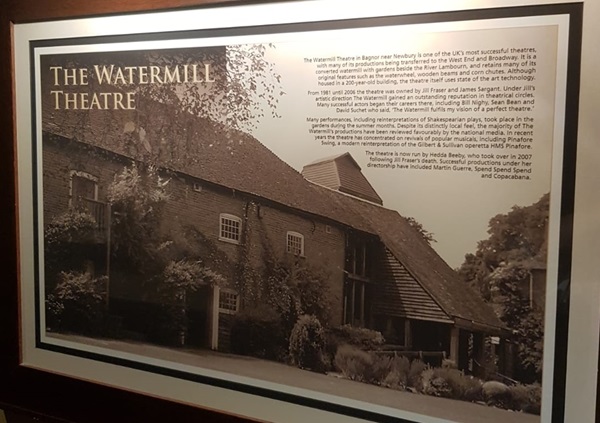
The text reads: The Watermill Theatre in Bagnor near Newbury is one of the UK’s most successful theatres, with many of its productions being transferred to the West End and Broadway. It is a converted watermill with gardens beside the River Lambourn, and retains many of its original features such as the waterwheel, wooden beams and corn chutes. Although housed in a 200-year-old building, the theatre itself uses state of the art technology.
From 1981 until 2006 the theatre was owned by Jill Fraser and James Sargant. Under Jill’s artistic direction The Watermill gained an outstanding reputation in theatrical circles. Many successful actors began their careers there, including Bill Nighy, Sean Bean and David Suchet who said, “The Watermill fulfils my vision of a perfect theatre.”
Many performances, including reinterpretations of Shakespearian plays, took place in the gardens during the summer months. Despite its distinctly local feel, the majority of The Watermill’s productions have been reviewed favourably by the national media. In recent years the theatre has concentrated on revivals of popular musicals, including Pinafore Swing, a modern reinterpretation of the Gilbert & Sullivan operetta HMS Pinafore.
The theatre is now run by Hedda Beeby, who took over in 2007 following Jill Fraser’s death. Successful productions under her directorship have included Martin Guerre, Spend Spend Spend and Copacabana.
A print and text about Michael Bond.
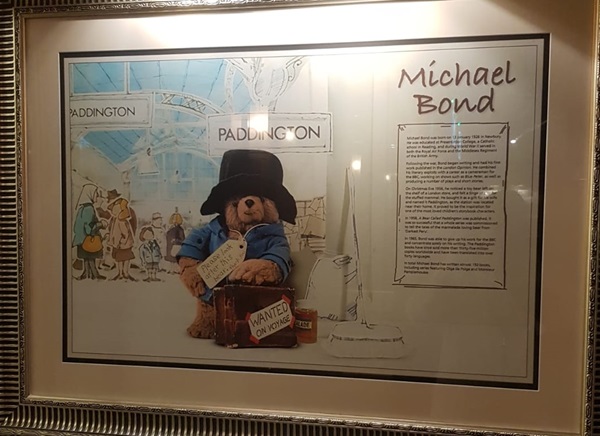
The text reads: Michael Bond was born on 13 January 1926 in Newbury. He was educated at Presentation College, a Catholic school in Reading, and during World War II served in both the Royal Air Force and the Middlesex Regiment of the British Army.
Following the war, Bond began writing and had his first work published in the London Opinion. He combined his literary exploits with a career as a cameraman for the BBC, working on shows such as Blue Peter, as well as producing a number of plays and short stories.
On Christmas Eve 1956, he noticed a toy bear left on the shelf of a London store, and felt a tinge of pity for the stuffed mammal. He bought it as a gift for his wife and named it Paddington, as the station was located near their home. It proved to be the inspiration for one of the most loved children’s storybook characters.
In 1958, A Bear Called Paddington was published, it was so successful that a whole series was commissioned to tell the tales of the marmalade loving bear from ‘Darkest Peru’.
In 1965, Bond was able to give up his work for the BBC and concentrate solely on his writing. The Paddington books have since sold more than thirty-five million copies worldwide and have been translated into over forty languages.
In total Michael Bond has written almost 150 books, including series featuring Olga da Polga and Monsieur Pamplemousse.
A photograph of the Newbury Fire Brigade in practice during the early 1930s.
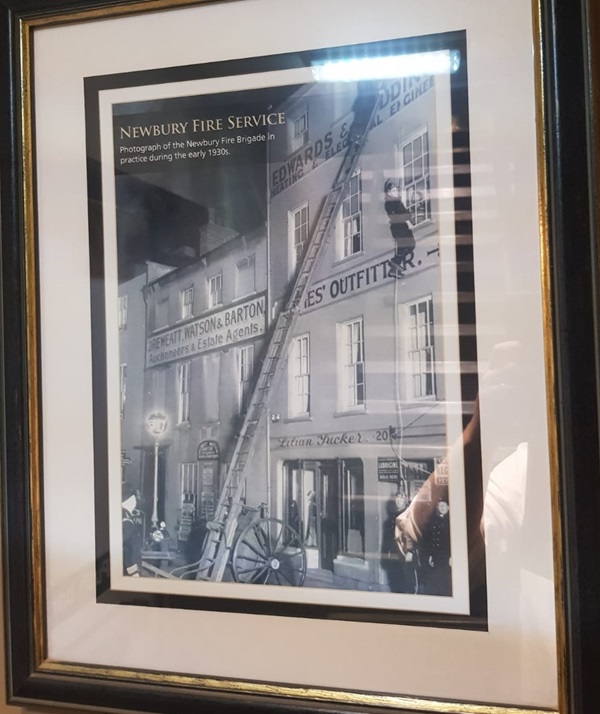
A sculpture entitled The Woodsman.
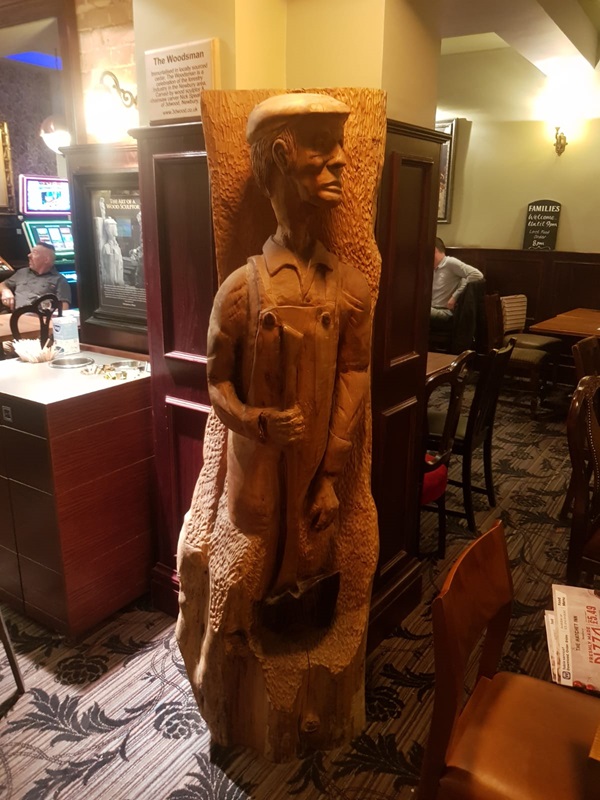
Immortalised in locally sourced cedar, The Woodsman is a celebration of the forestry industry in the Newbury area. Carved by wood sculptor & chainsaw carver Nick Speakman, of 3dwood, Newbury.
www.3dwood.co.uk
External photograph of the building – main entrance.
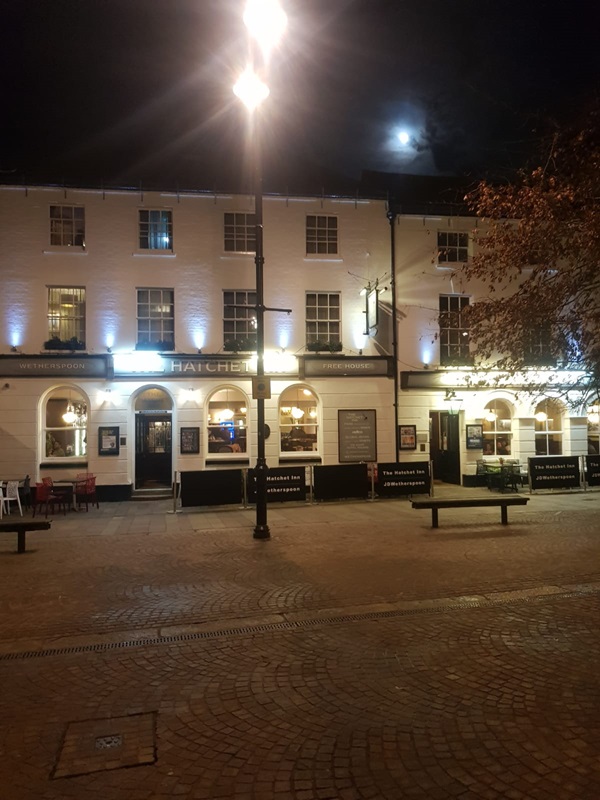
If you have information on the history of this pub, then we’d like you to share it with us. Please e-mail all information to: pubhistories@jdwetherspoon.co.uk